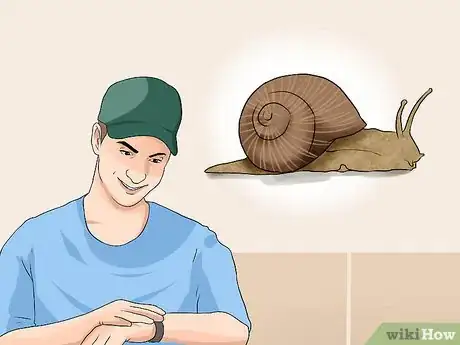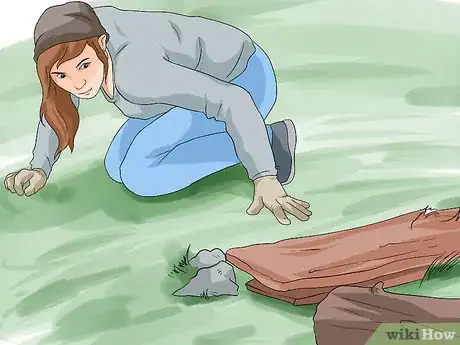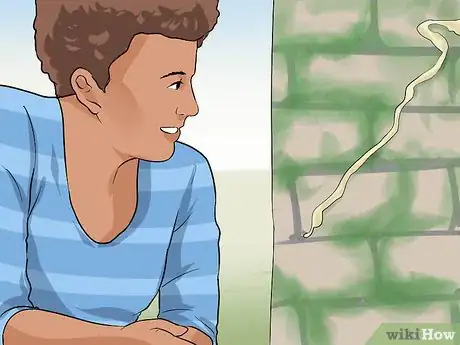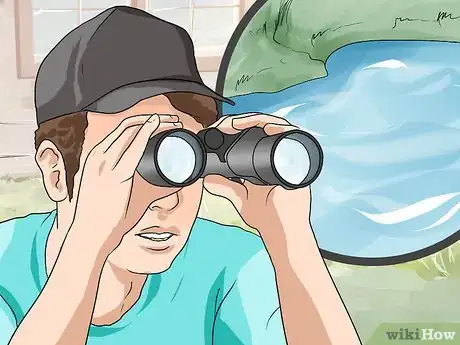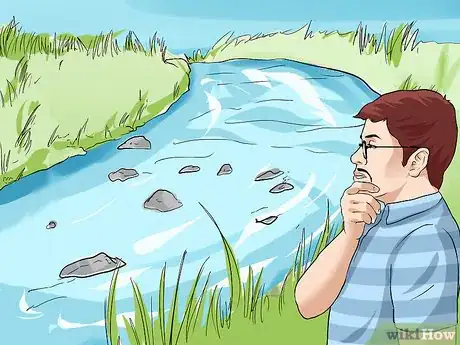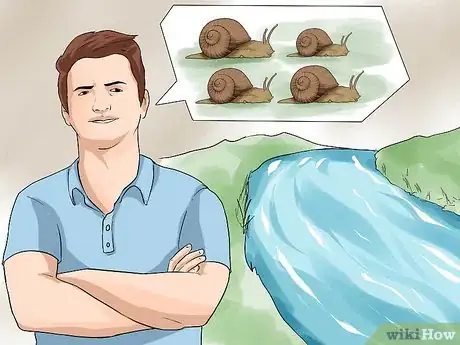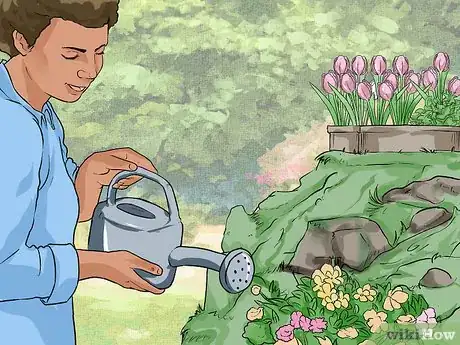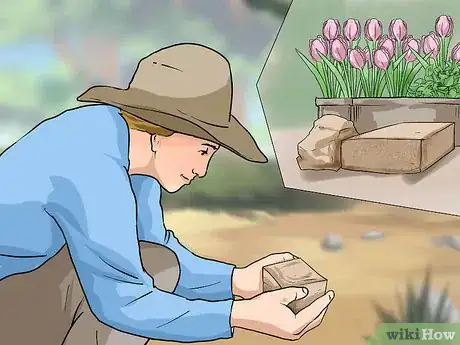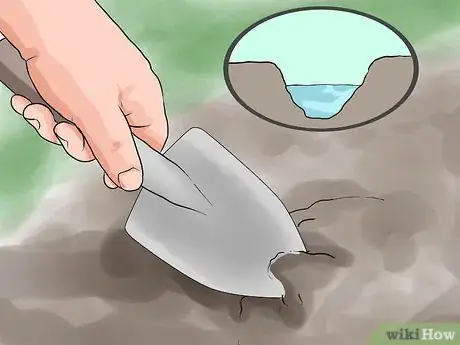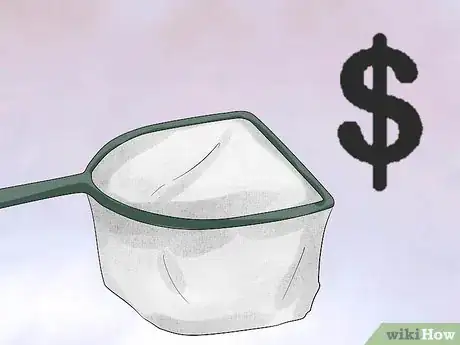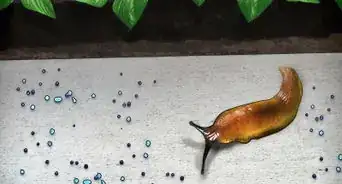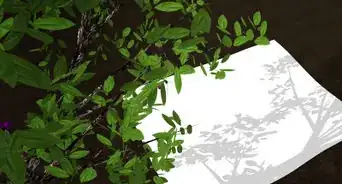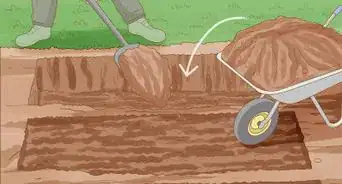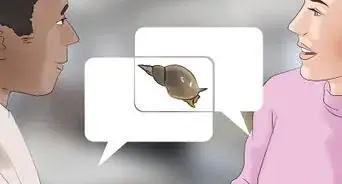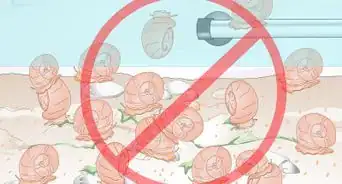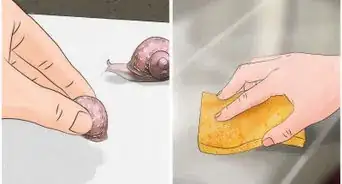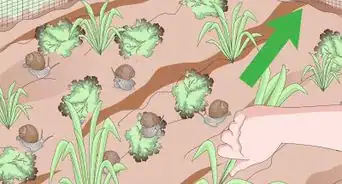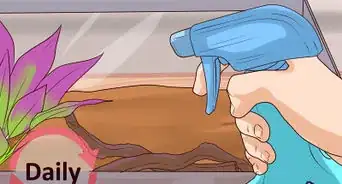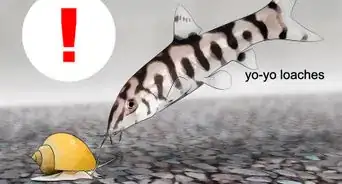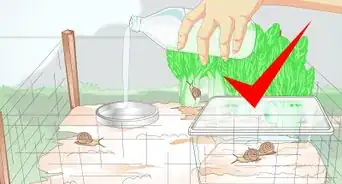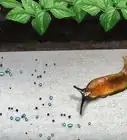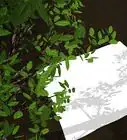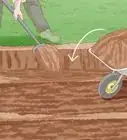This article was co-authored by wikiHow Staff. Our trained team of editors and researchers validate articles for accuracy and comprehensiveness. wikiHow's Content Management Team carefully monitors the work from our editorial staff to ensure that each article is backed by trusted research and meets our high quality standards.
There are 8 references cited in this article, which can be found at the bottom of the page.
wikiHow marks an article as reader-approved once it receives enough positive feedback. This article received 15 testimonials and 82% of readers who voted found it helpful, earning it our reader-approved status.
This article has been viewed 217,503 times.
Learn more...
Snails can be annoying pests, particularly if you're a gardener. However, some people catch snails to keep as pets or to show to young children. Whatever the reason, if you want a snail you will need to seek it out in the right habitat and in the snail's ideal environmental conditions. Terrestrial and aquatic snails live in very different environments. By learning how to search for and catch snails, you'll be able to acquire as many of these molluscs as you need.
Steps
Looking For Terrestrial Snails
-
1Search at the optimal time. Though snails may be out at any time, they are primarily nocturnal. This is because snails are susceptible to drying out in direct sunlight. Most snails go out searching for food when it's dark out (or at least darker than usual), so that would be the best time to find one.[1]
- If at all possible, try to go looking for snails in the evening or on dark, overcast days.
-
2Check common snail habitats. Snails can live in many different places, but most terrestrial snails live in shaded, damp areas. If there isn't much shade available, many snails will burrow under hard objects that remain cool and damp away from direct sunlight.[2] Some common snail habitats include:
- rocks
- debris
- flower pots
- wooden planks on the ground
- damp, shaded areas[3]
- weedy or leafy areas close to the ground
Advertisement -
3Look for a slime trail. One telltale sign of a snail is the viscous, sticky trail of slime it leaves in its wake. If you're having a hard time spotting snails, you might have more luck if you search for their slime trails and follow a sticky streak to the snail itself.[4]
- Slime is usually left in silvery streaks across dry surfaces.
- You might see a slime trail on rocks, dirt, pavement, or on vertical surfaces like trees and walls.
Finding Aquatic Snails
-
1Seek out ideal conditions. Freshwater snails can live in any aquatic habitat. Some snails do well in polluted waters, but for the most part, snails typically thrive in clean, clear bodies of water.[5]
- Stable, clean substrates at the bottom of the water are ideal habitats for snails.
- Clean, clear water that is not murky or full of sediments will house the greatest range of snail species.
- Look for water bodies with high oxygen concentrations to find the most snails. Fast-moving water bodies with a lot of rapids or falls tend to be the most oxygenated habitats.
-
2Search river bottoms. While there are many snails that live in standing bodies of water, fast-moving water bodies tend to produce ideal conditions for snails to inhabit. Rivers, creeks, and streams are ideal freshwater snail habitats, with medium- to large-sized rivers yielding the most species of snail.[6]
-
3Try larger bodies of water. Lakes and ponds are common freshwater snail habitats. However, they do not have the biodiversity or the ease of access that a river/creek/stream bottom has. You may still be able to find snails in a lake or pond, provided that the water is clear enough to allow sunlight and oxygen to reach the bottom.[7]
Catching Snails
-
1Lure snails out of hiding. If you're having trouble finding snails in the wild, you might try luring snails out by creating ideal conditions for them. Remember that terrestrial snails like cool, slightly wet environments that are out of direct sunlight.[8]
- Identify an area that might house snails. You can usually find snails in cool, damp, shaded environments or near food sources like gardens.
- Water the area late in the afternoon. Try to dampen the soil and leave a mist on any low lying vegetation nearby.
- Return after dark with a flashlight. If snails inhabit the area you've watered, you should see them or their slime trails fairly easily.
-
2Create a snail hiding place. If there aren't any ideal snail habitats in your area, you can create your own by leaving objects in and around a garden or field. As you set up your hiding places, consider whether a given object would provide adequate shade and moisture to a soil-dwelling terrestrial snail.[9]
- Try laying boards of wood, large, flat bricks, stones, or flower pots near an area you believe snails inhabit.
- You can also use inverted melon rinds, but be aware that these may also attract other insects like ants.
-
3Build a pitfall trap. Pitfall traps are an excellent way to catch terrestrial invertebrates. Be aware, though, that pitfall traps catch many different kinds of ground-dwelling insects. Your pitfall trap may catch a couple snails, but it will most likely also catch other critters. This will require some sifting through and releasing other insects.[10]
- Dig a small hole in the ground that is deep and wide enough to hold a cup.
- Add beer or baking yeast to a 5% sugar and water solution in a pitfall trap. Be sure you only leave a shallow pool of liquid or the snails you catch might drown.
- Check your trap on a regular basis. You may decide to check every day or you might check the trap multiple times each day, but if you leave your snail for a prolonged period of time it may die.
-
4Catch aquatic snails. Aquatic snails can be a bit more difficult to catch than terrestrial snails. However, with the right tools you should be able to find and catch some freshwater snails near you. One of the most common ways of catching aquatic snails (and other aquatic invertebrates) is by using a kick-net.[11]
- Purchase or build a kick-net. A kick-net can be easily made by fastening a long, thin mesh to two wooden poles, creating a net that looks like a giant scroll with handles in the folded ends.
- Look for an area in the water where there are riffles or falls.
- Approach the chosen area from downstream to avoid disturbing any snails you might catch.
- You can use rocks to stabilize the net underwater and downstream, then lift submerged objects to "shake" snails loose. You can also hold the handles of the kick-net so the net is downstream and walk backward upstream, kicking rocks and submerged objects loose.
- Be aware that a kick-net will catch all kinds of aquatic invertebrates. While some of the invertebrates you catch may be snails, there will probably be many other types of unwanted invertebrates present in the net as well.
Community Q&A
-
QuestionI can't seem to find a snail or two in my garden. What do you recommend I do?
 Community AnswerTry building snail shelters and wetting the soil to lure snails to your yard. You can also dig a pitfall trap to catch snails and other ground-dwelling creatures near your home.
Community AnswerTry building snail shelters and wetting the soil to lure snails to your yard. You can also dig a pitfall trap to catch snails and other ground-dwelling creatures near your home. -
QuestionWhat season is good for finding snails?
 Community AnswerSpring and fall because it's not too hot or too cold, and they can usually be found roaming around, especially if it's rainy.
Community AnswerSpring and fall because it's not too hot or too cold, and they can usually be found roaming around, especially if it's rainy. -
QuestionWhere can I look besides stores and under rocks for a snail?
 Community AnswerTry looking in parks, school playgrounds, or even in bushes or hedges along sidewalks.
Community AnswerTry looking in parks, school playgrounds, or even in bushes or hedges along sidewalks.
Warnings
- Be careful not to accidentally crush the snails you find. They can have very delicate shells.⧼thumbs_response⧽
- Always wash your hands after handling snails.⧼thumbs_response⧽
References
- ↑ http://pss.uvm.edu/ppp/pubs/el14.htm
- ↑ http://ucanr.edu/sites/CalSnailsandSlugs/Management/
- ↑ http://blogs.scientificamerican.com/symbiartic/find-all-the-snails/
- ↑ https://www.nwf.org/kids/family-fun/outdoor-activities/follow-a-snail-trail.aspx
- ↑ https://pubs.ext.vt.edu/420/420-530/420-530_pdf.pdf
- ↑ https://pubs.ext.vt.edu/420/420-530/420-530_pdf.pdf
- ↑ https://pubs.ext.vt.edu/420/420-530/420-530_pdf.pdf
- ↑ http://ipm.ucanr.edu/PMG/PESTNOTES/pn7427.html
- ↑ http://ipm.ucanr.edu/PMG/PESTNOTES/pn7427.html
About This Article
To find a snail, wait to go searching until the evening or when it's dark out since snails are nocturnal. Then, look for snails in shaded, damp areas, like under rocks, near weeds, under fallen branches, or inside of flower pots. You can also try looking for silvery slime trails, which are the trails that snails leave behind when they travel. If you find a slime trail, look nearby for a snail since there's probably one around! To learn how to find aquatic snails and how to catch snails, scroll down!
